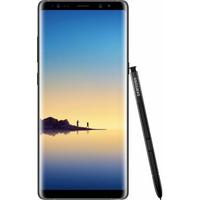Huawei Mate 10 Pro vs. Galaxy Note 8: Battle of the Android Giants
Huawei's Mate 10 Pro is packed with power, AI smarts and a massive battery. Here's how it compares to the king of big-screen phones, the Galaxy Note 8.
After a modest wait, U.S. phone customers will finally be able to get their hands on the Huawei Mate 10 Pro in February. Even though Huawei's plans to distribute its latest flagship device through a partnership with AT&T may have fallen through, there's a lot of buzz behind the handset. Huawei has sold its phones in the States before, but has never made an effort quite like this.
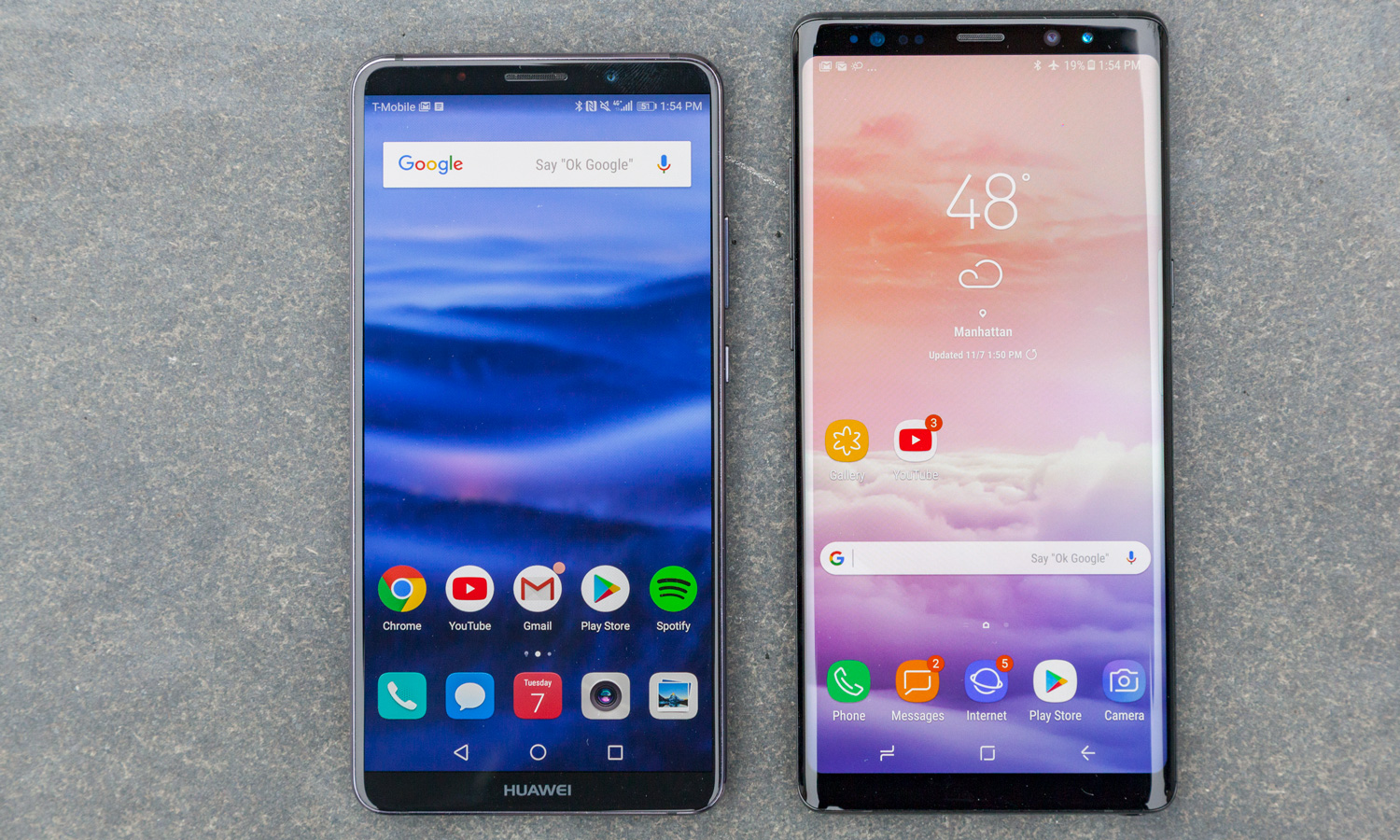
The Mate 10 Pro faces a premium smartphone market that’s more crowded than ever before. But the stiffest competition comes from Samsung and its Galaxy Note 8. Like the Mate 10 Pro, the Note 8 features an extra-wide AMOLED display, 6GB of RAM, dual cameras and a cutting-edge design with skinny bezels. If there's one device that Huawei's big American debut invites comparisons to, it's going to be the Note 8.
Does Huawei have what it takes to go up against the juggernaut of big phones? We put the Mate 10 Pro and the Note 8 head-to-head in a variety of tests to find the answer.
Specs
| Row 0 - Cell 0 | Huawei Mate 10 Pro | Samsung Galaxy Note 8 |
| Price | $799 | $950 |
| OS | Android 8.0 Oreo with EMUI 8.0 | Android 7.1.1 Nougat with Samsung Experience 8.5 |
| Screen Size, Resolution | 6 inches, 2160 x 1080, AMOLED | 6.3 inches, 2960 x 1440, AMOLED |
| CPU | Hisilicon Kirin 970 | Qualcomm Snapdragon 835 |
| RAM | 6GB | 6GB |
| Storage | 128GB | 64GB |
| microSD Slot | No | Yes, up to 256GB |
| Rear Camera | Main 12 MP (f/1.6) with OIS; Secondary 20 MP (f/1.6) monochrome | Main 12 MP (f/1.7) with OIS; Secondary 12 MP (f/2.4) telephoto with OIS |
| Front Camera | 8 MP (f/2.0) | 8 MP (f/1.7) |
| Battery Life (Hrs:Min) | 14:33 | 11:11 |
| Water Resistance | Yes, IP67 | Yes, IP68 |
| Size | 6.07 x 2.93 x 0.31 inches | 6.40 x 2.94 x 0.34 inches |
| Weight | 6.28 ounces | 6.88 ounces |
Design
If you're looking for a massive screen in a relatively compact package, both of these phones will suit you just fine. The slightly taller Galaxy Note 8 can fit a 6.3-inch panel, while the Mate 10 Pro's screen measures 6 inches.
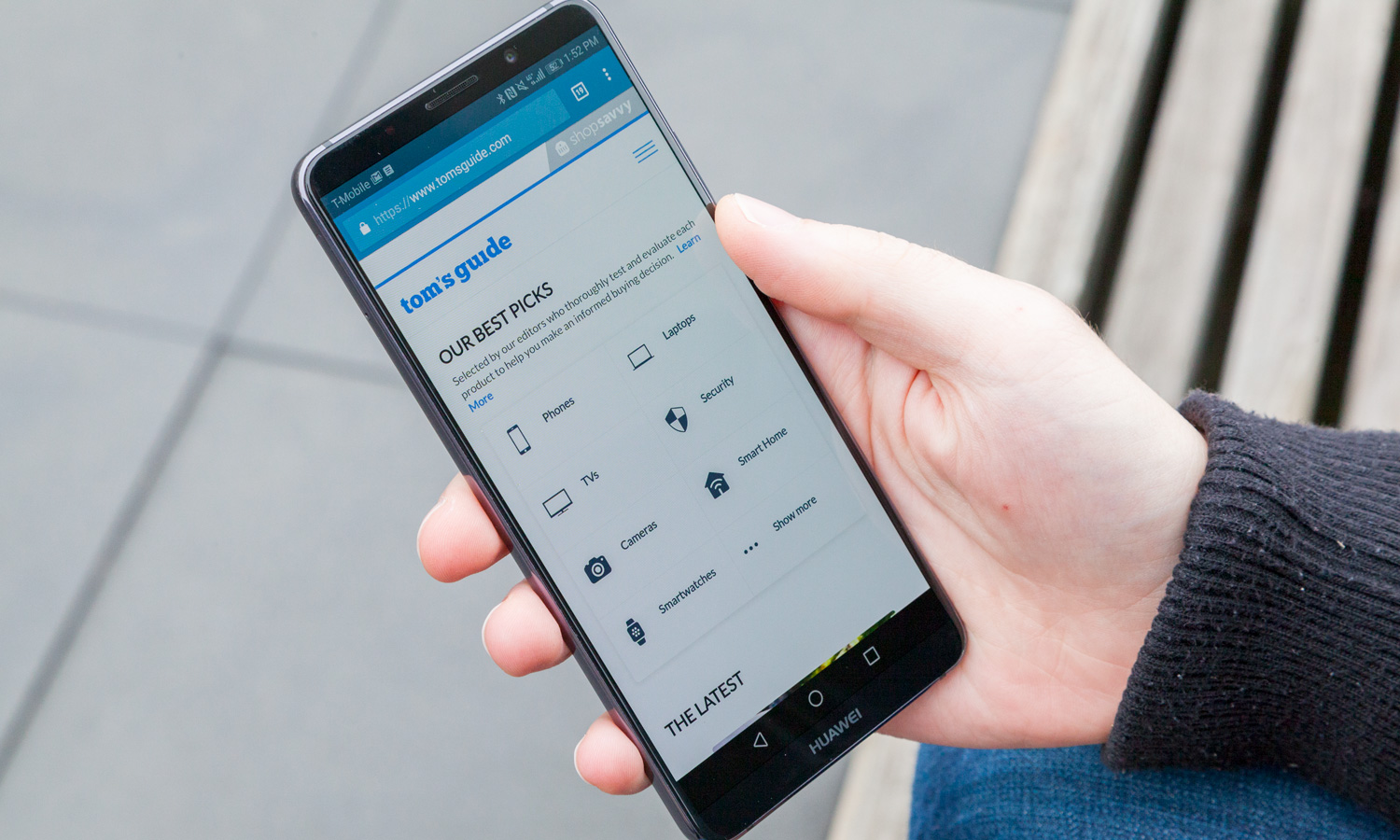
Super-slim bezels and the lack of front-facing fingerprint sensors and home buttons also means that both devices don't feel as bulky as those figures suggest. The Mate 10 Pro is a bit thinner and lighter than the Note 8, but the difference is negligible.
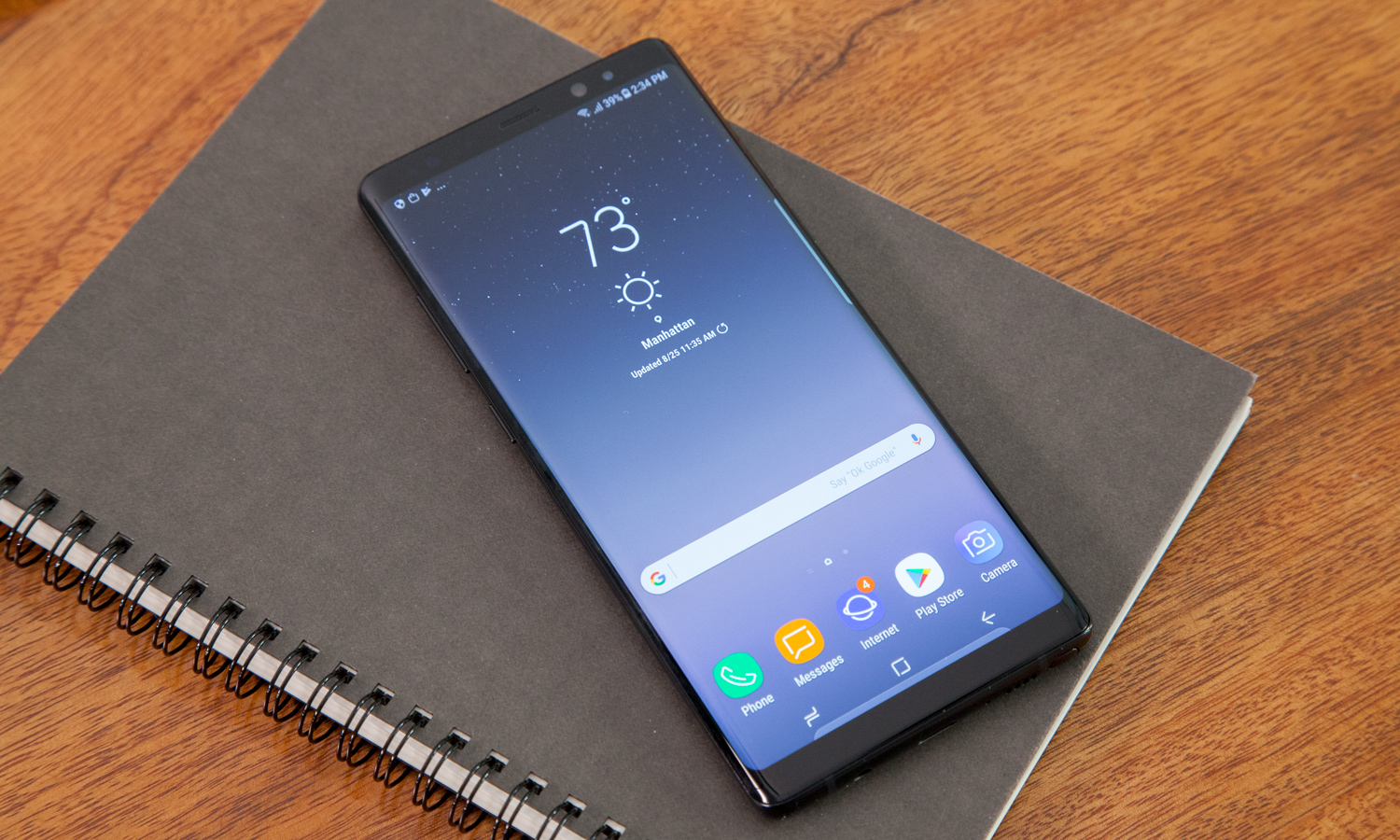
However, when you analyze the details, the Note 8 pulls ahead. First, there's that beautiful Infinity Display that slopes off at the edges, making swiping from side to side feel buttery smooth. Samsung is also part of a dying breed of phone makers, alongside LG, that still feels it's worthwhile to include headphone jacks on their most expensive models — and we agree with them.
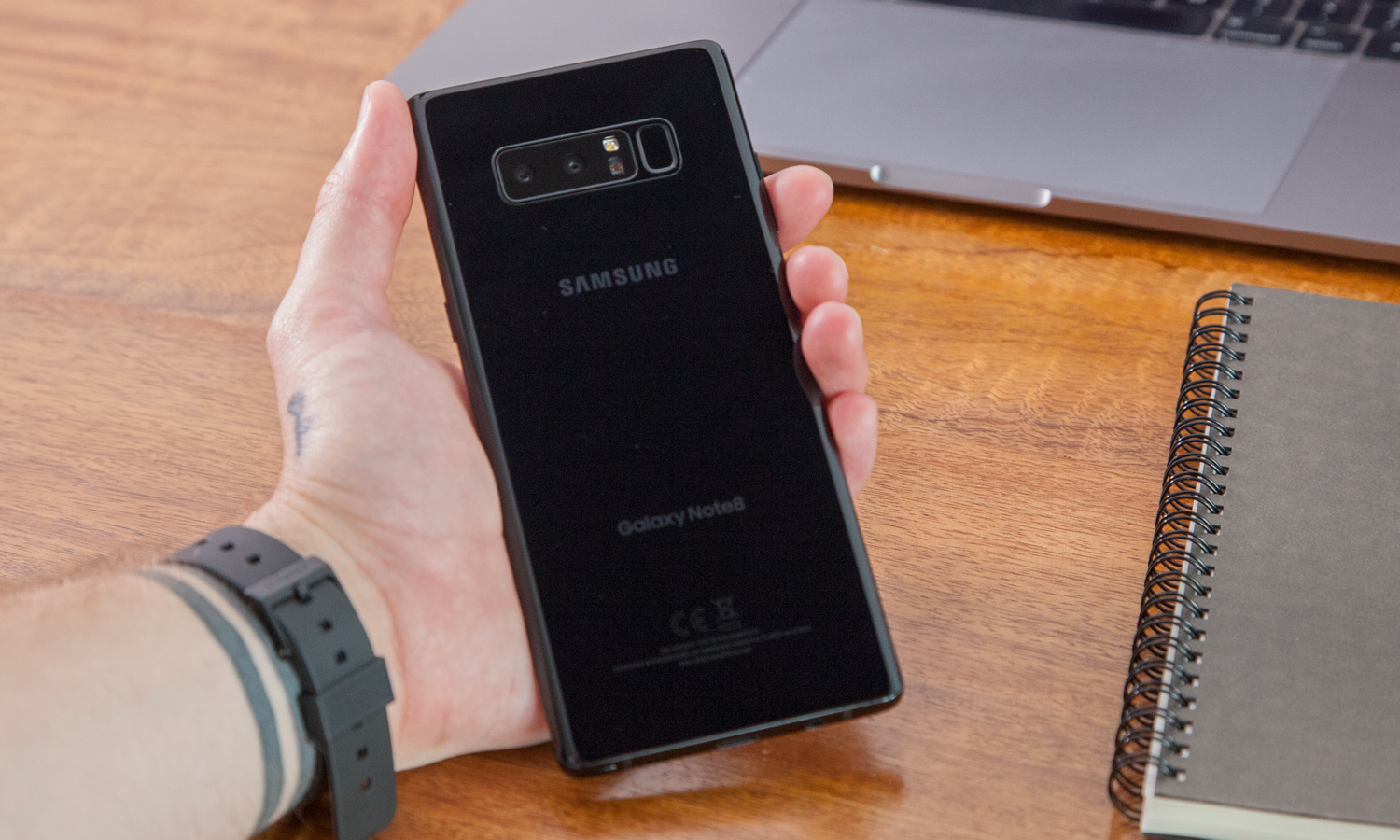
In fact, the Note 8's only design transgression is the placement of its fingerprint sensor, which is scrunched up immediately to the right of the dual cameras and flash around back. It's awkwardly compact, too, and nearly impossible to distinguish from the components next door. Make sure you have a cloth handy during photo ops, as you're going to have many smudges to wipe away. The Mate 10 Pro's scanner is also quite close to its cameras, but a pronounced ridge and recessed surface make it significantly easier to locate.
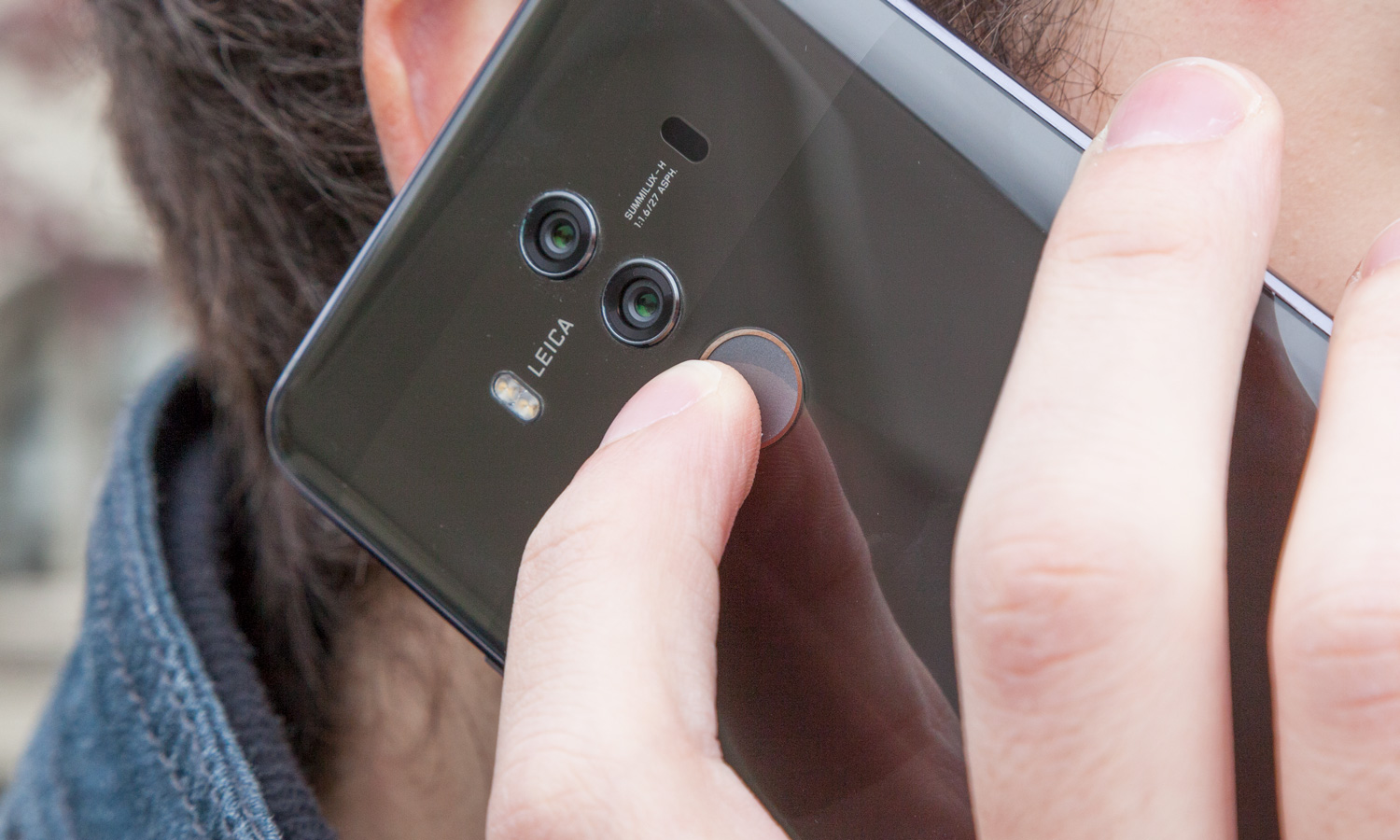
Otherwise. though, Samsung and Huawei's flagships feel quite similar in the hand. Both are solidly built and employ metal edges with glass backs, which enables wireless charging on the Note 8. Both are water resistant, too: the Note 8's IP68 rating allows it to stay submerged underwater at a maximum of 5 feet for 30 minutes, while the IP67-rated Mate 10 Pro can survive at 3.5 feet over the same length of time.
Competently made as the Mate 10 Pro is, it's outshone by the Note 8's headphone jack, Infinity display and improved durability.
Winner: Galaxy Note 8
Display
The Galaxy Note 8's 6.3-inch AMOLED screen isn't just a little bigger than the Mate 10 Pro's 6-inch AMOLED panel — it's a little sharper. too, with a resolution of 2960 x 1440, compared with the Mate 10 Pro's 2160 x 1080.
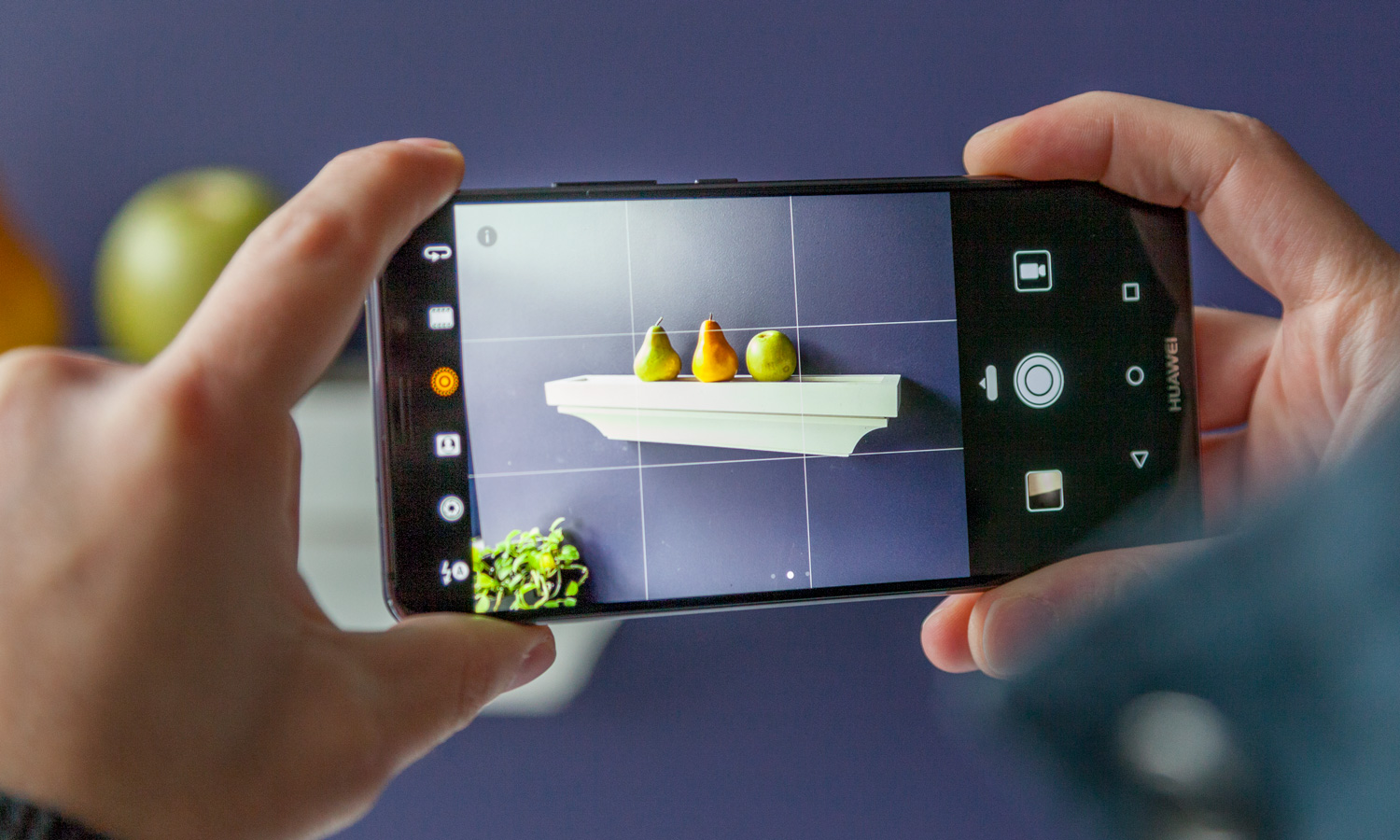
That translates to a density of about 521 pixels per inch (ppi) for the Samsung, compared with 402 ppi in the Huawei. It's not a distinction you're likely to notice unless you look really closely, but some eagle-eyed users may appreciate the Note 8's smoother text and visuals.
Regardless, these are some of the best smartphone displays you'll find on the market. They're equally strong when it comes to visibility at off-center viewing angles, and both allow for a realistic or more-saturated color profile, depending on your preference. (The Note 8 features four modes, while the Mate 10 Pro has two.)
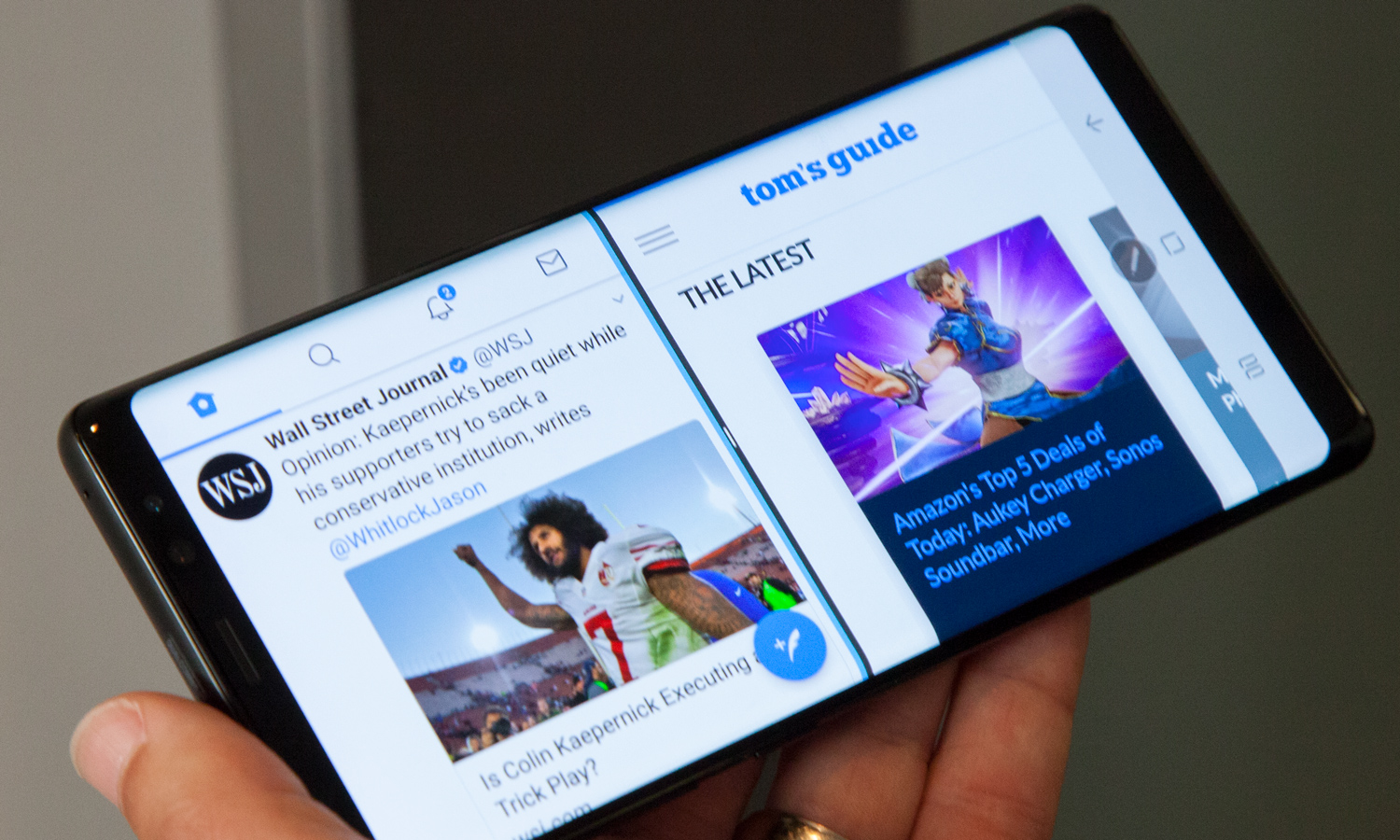
Both screens exceed the 433-nit brightness average for smartphones, with the Note 8 coming in just a bit more vibrant. Comparing color gamut and reproduction, the Note 8 demonstrated a slight advantage in both categories. It reproduced 204 percent of the sRGB color space in our testing, and notched a Delta-E accuracy rating of 0.5. (Numbers closer to 0 are better in the latter test.) The Mate 10 Pro still performed very well, but its scores of 147 percent and 0.6, respectively, weren't enough to earn it the win here.
Winner: Galaxy Note 8
Performance
Many flagship Android phones might look and feel different, but when it comes down to the underlying processor, they're typically driven by the same Qualcomm chipset. Consider the Mate 10 Pro the exception to that trend.
Featuring Huawei's own Kirin 970 system-on-chip and 6GB of RAM, the Mate 10 Pro proved to be every bit as powerful as the Snapdragon 835-powered Note 8 in our testing. In fact, the Mate 10 Pro outperformed not only Samsung's phablet in Geekbench 4, but Google's Pixel 2 as well. It was similarly swift in transcoding 4K video to 1080p via the Adobe Premiere Clip app, finishing that task 6 seconds faster than the Note 8.
| Row 0 - Cell 0 | Huawei Mate 10 Pro | Samsung Galaxy Note 8 |
| Geekbench 4 | 6,784 | 6,564 |
| 3DMark Ice Storm Unlimited | 31,908 | 39,834 |
| Adobe Premiere Clip Transcoding (Sec:Min) | 0:58 | 1:04 |
If the Mate 10 Pro has any deficiencies, it’s in the graphics department. We never encountered lag when gaming on the device, but competing Android flagships, including the Note 8, have outscored the Mate 10 Pro by anywhere from 6,000 to 8,000 points in 3DMark's Ice Storm Unlimited test of graphic prowess.
MORE: Best Smartphones on the Market Now
However, the Huawei has one ace up its sleeve Samsung doesn't: the Kirin 970's Neural Processing Unit. Called NPU for short, this subprocessor specializes in AI-focused applications, like identifying subjects through the phone's camera, or monitoring how you use your Mate 10 Pro over time to shift resources and keep it running faster for longer. Unfortunately, seeing as how we've only had our unit for two months, not two years, we can't substantiate that second claim.
Winner: Mate 10 Pro
Cameras
The Mate 10 Pro and Note 8 compare favorably in the camera department. Huawei has elected to go with a 12-megapixel main sensor paired with a 20-MP monochrome one, both of which have superwide apertures of f/1.6. However, only the former lens has optical image stabilization. Meanwhile, the Note 8 uses two 12-MP lenses — one with an f/1.7 aperture, and another telephoto shooter with an f/2.4 aperture. Unlike the Mate 10 Pro, both the Note 8's rear cameras have OIS.
The wide angle-versus-telephoto distinction is an important one, particularly when it comes to Portrait Mode — something both of these phones support. The narrower field-of-view of the Note 8’s telephoto shooter allowed me to capture a more conventional portrait of my colleague Henry, compared with the zoomed-out frame of the Mate 10 Pro.
I prefer the perspective of the Note 8, though the Mate 10 Pro wins some points back with a slightly more vibrant image that reins in the highlights, particularly the sunlight falling on Henry's face.
Both the Mate 10 Pro and the Note 8 rely on 8-MP front-facing cameras. However, Huawei has a secret weapon in the form of that Neural Processing Unit inside the Kirin 970. The NPU can recognize certain objects, like people, landscapes, nature, food and so on, and tune exposure parameters automatically in each instance to deliver a better shot, no matter which of the handset's cameras you're using.
It's a great idea in theory, though it's hard to say how effective the NPU is in such circumstances, mostly because the feature cannot be turned off and you can't compare before and after shots. What's more, despite the Mate 10 Pro's on-board smarts, the Note 8 still delivered the better selfie. The Samsung's more realistic colors and skin tone made all the difference.
Compared to the previous portraits, the differences between these skyline photos are less immediately noticeable, but reveal themselves as you pick apart the details. The Mate 10 Pro's image is sharper and yet less noisy, especially when you focus on the deep-blue sky. It's an impressive showing for Huawei's camera technology against a really strong competitor in the Note 8, though the white balance on the Mate 10's shot seems a bit too warm and dramatic.
Finally, this late-afternoon scene is an excellent test of the low-light capabilities of both handsets, as well as their HDR modes. While I appreciate the crispness the Mate 10 Pro delivered here, the result is much too dim, with a blue cast that doesn't pull much color out of the shadows. The Note 8's rendition was a bit blurrier, but the punchier colors are the mark of a phone that's been better designed for low-light photography.
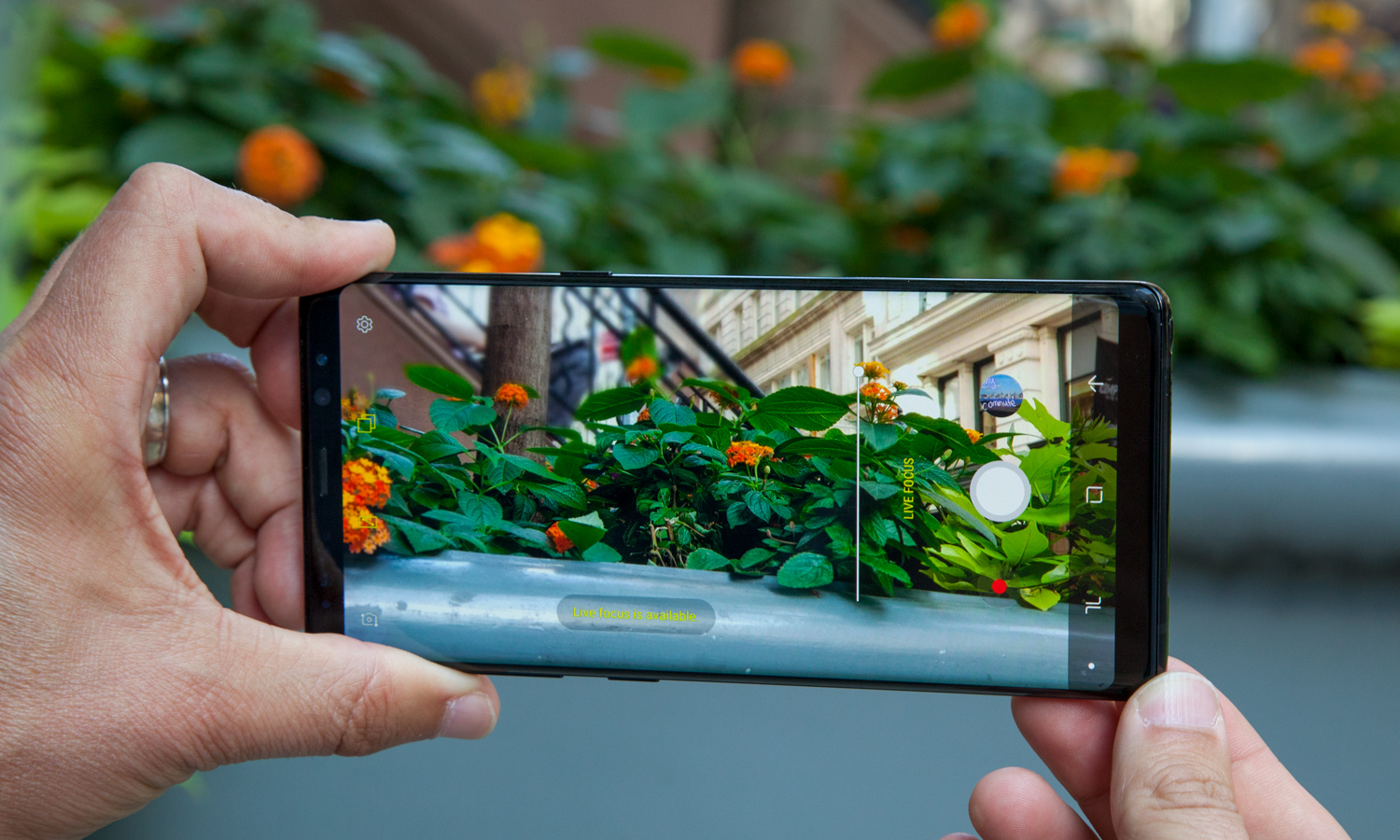
Overall, it wasn't easy to pick a winner. The Mate 10 Pro's camera is fantastic, producing photos that are just a bit cleaner than what you get from the Note 8 on average. But the colors Huawei's phone captured always seem to be either a bit too intense or dark, and the Mate 10 Pro's mediocre low-light performance makes it the less dependable of the two phones where photography is concerned.
Winner: Galaxy Note 8
Software and Special Features
Out of the plethora of flagships released in the previous year, you won't find two phones with longer feature sets than the Mate 10 Pro and Note 8.
Let's start with Huawei's phone. The Mate 10 Pro runs the latest release of Android, version 8.0 Oreo, with the phone maker's own EMUI interface layered over top of the experience. It's a significant departure from the aesthetic and organization of stock Android, which may rub some users the wrong way. However, it also allows you to do many things Google's OS won't let you out of the box.
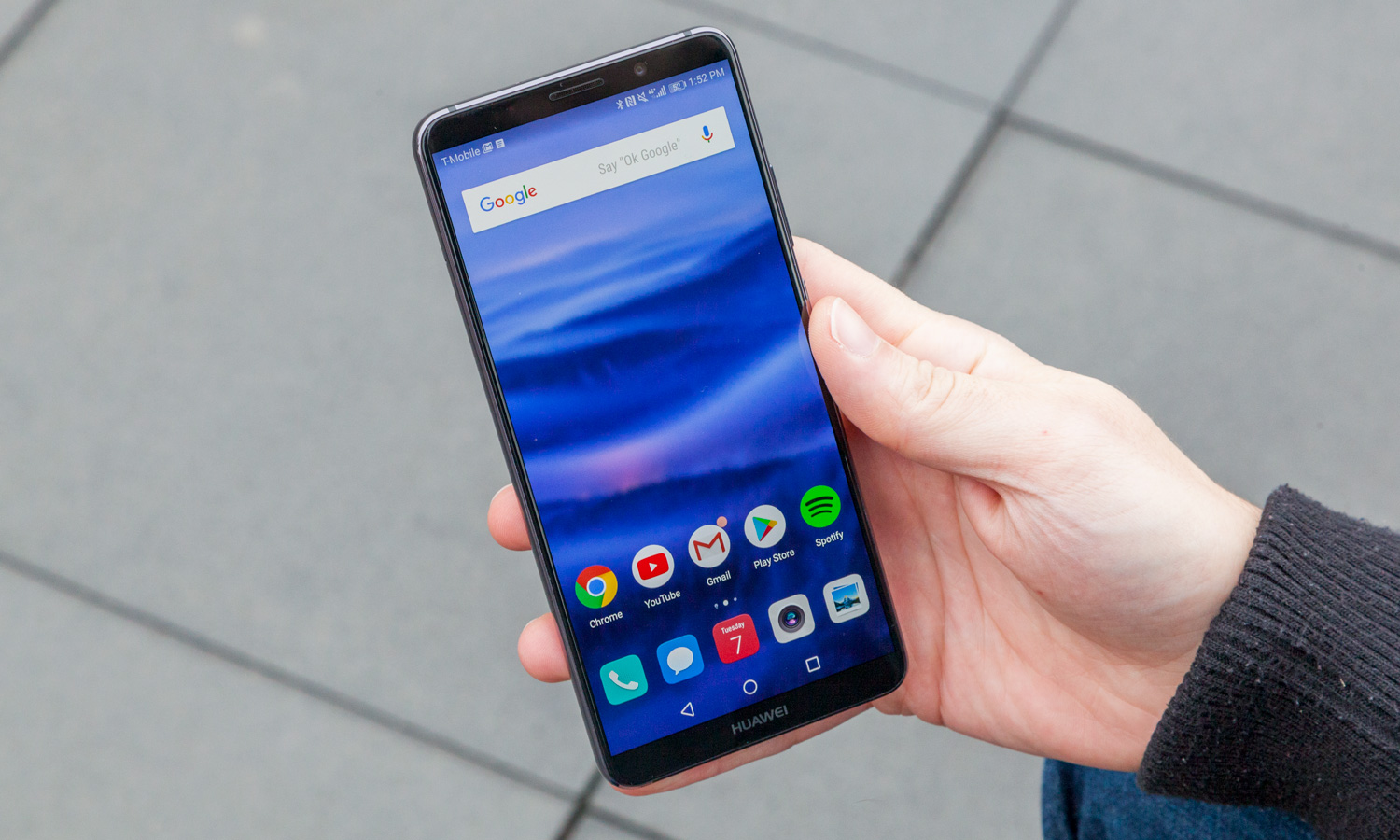
There's Private Space, letting you create a secret second user on your phone only accessed with a unique PIN code, password or fingerprint. PC Mode lets you use a USB-C-to-HDMI cable to instantly turn your Mate 10 Pro into a makeshift desktop computer. App Pair lets you create two versions of the same app on your phone, so you can use them with multiple accounts.
You also can set gestures with your knuckles as custom shortcuts, and use a software navigation button to take the place of the standard Android back, home and recent apps bar, freeing up a significant chunk of space on the Mate 10 Pro's big display. And that's not even a complete list of everything Huawei has packed in.
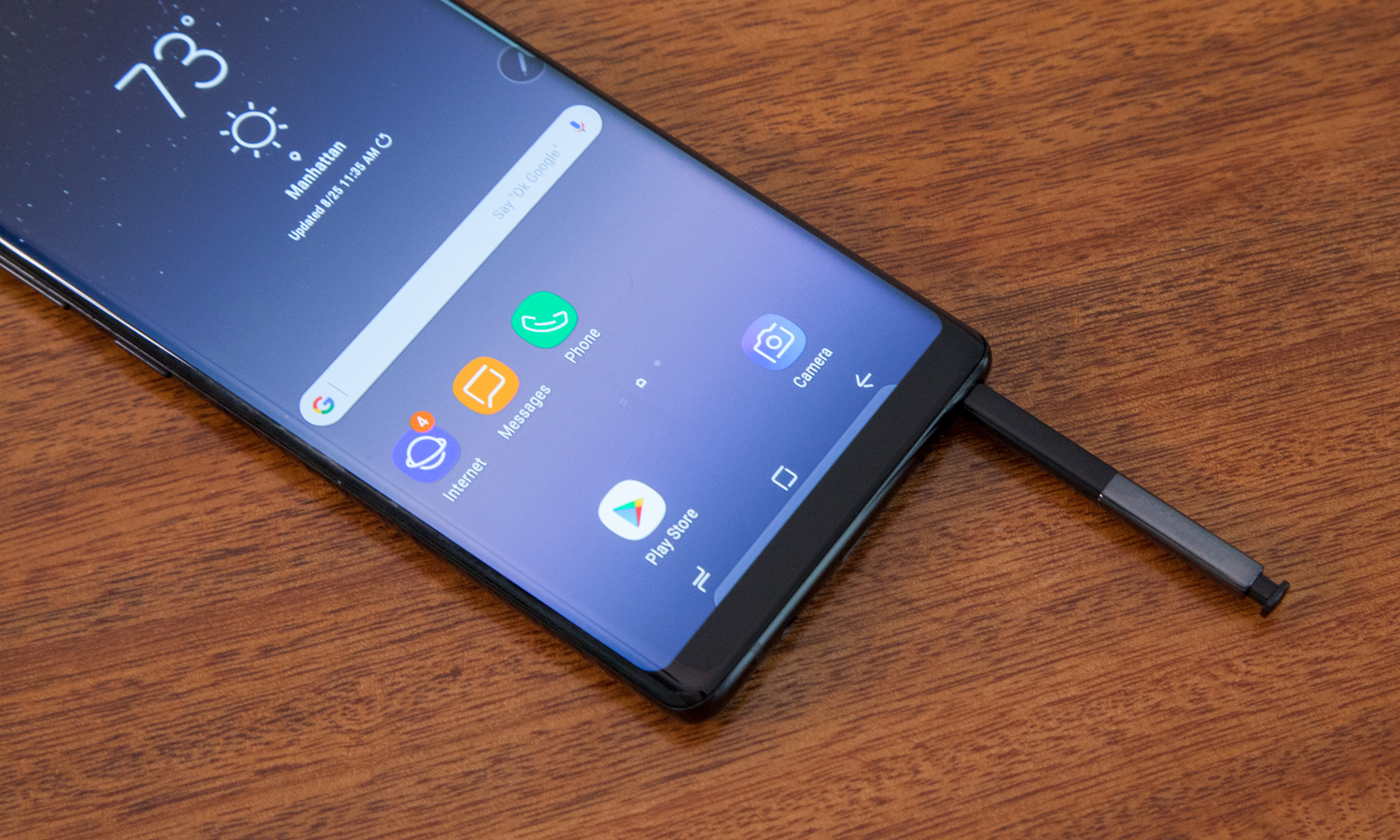
The Note 8 is perhaps even more generous with its special features, though it still runs Android 7.1.1 Nougat as of this writing, which is disappointing for such a popular high-end handset. Samsung has distributed Oreo betas to Note 8 users, which fortunately means the wait for an update shouldn't be much longer.
MORE: Android Tips to Unlock Your Phone's Full Potential
The Note 8 pairs Android with version 8.5 of the Samsung Experience UI, which is also somewhat of a departure from how Android looks and feels on a Pixel or an Android One-branded device. However, it doesn't seem as dated as EMUI and offers a little more personalization, too.
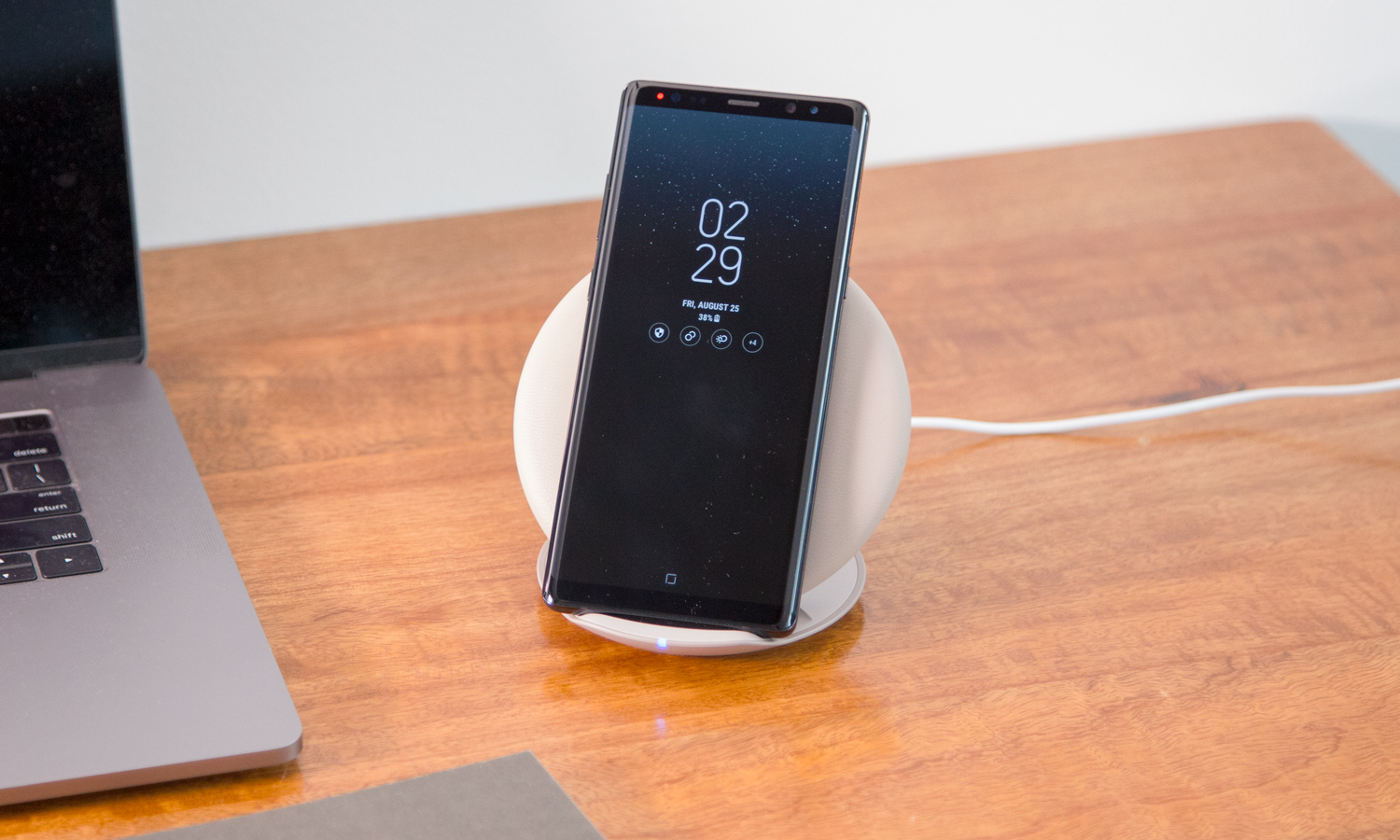
Samsung gives you free rein to tailor almost every aspect of the Note 8 to your liking, from offering several performance modes geared for things like gaming or watching media, to the color of the navigation bar, to app and contact shortcuts in the Edge panel (accessed by swiping in from the right side of the screen), to even the system font. Like the Mate 10 Pro and its PC Mode, you can use the Note 8 as a PC, too, if you opt for Samsung's DeX dock. Unfortunately, the desktop interface cannot be accessed with a simple HDMI cable, like on the Mate 10 Pro, and the DeX dock normally runs $149.99.
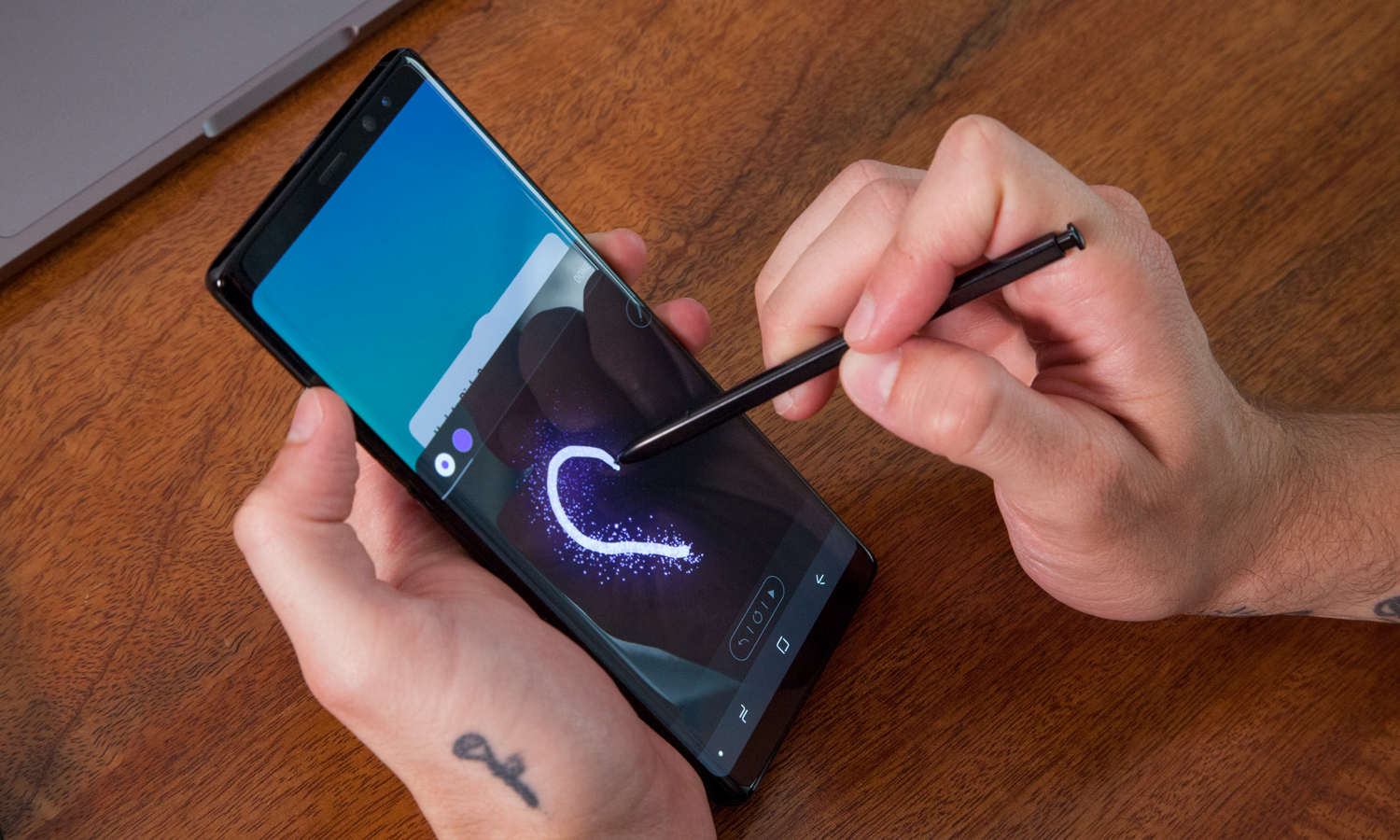
And then, of course, there's the S Pen, which unlocks a unique interface for Samsung's users. The S Pen allows you to jot notes down, even when the phone is asleep; simply remove the stylus while the screen is off, and you can begin scrawling away at a moment's notice, without having to log in. The S Pen can also be used to draw Live Messages, which are sort of like animated GIFs of your doodles, as well as translate text on the fly.
Although we wish Samsung was quicker to update the Note 8, its phone wins the features round on sheer customizability and the strength of the S Pen.
Winner: Galaxy Note 8
Battery Life
The Note 8's 3,300 mAh battery lasted 11 hours and 11 seconds in our battery test, which consists of continuous website streaming over T-Mobile LTE. That's quite good for a flagship phone, as you strangely have to pay less to get truly outstanding battery life in this day and age.
Still, it doesn't compare to what Huawei has managed with the Mate 10 Pro's behemoth 4,000 mAh battery. At 14 hours and 33 minutes, we haven't tested a phone with a Snapdragon 835-equivalent processor that lasts longer on a charge.
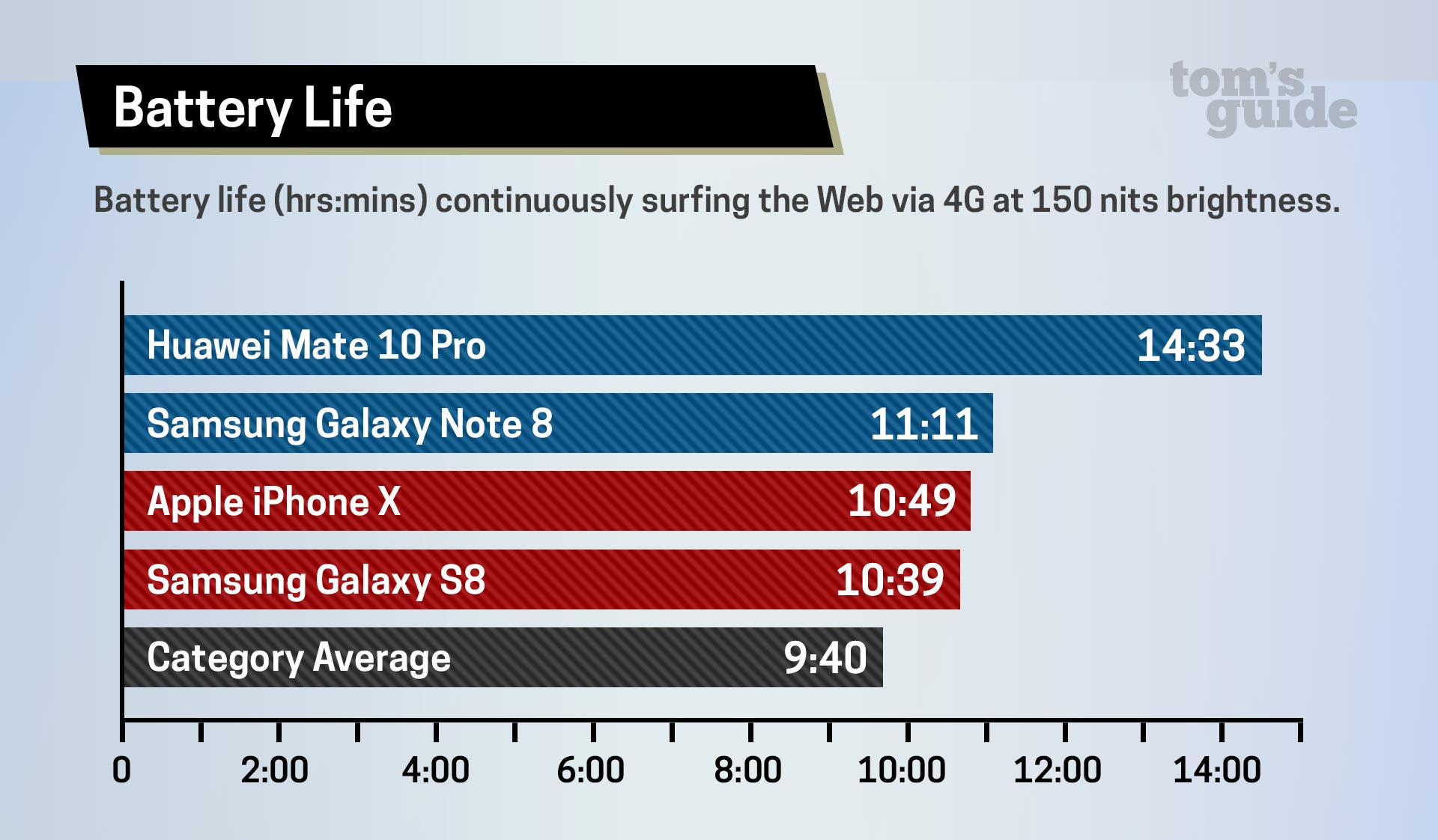
Despite the large capacities, both companies promise their phones are quick to top up. Huawei includes one of its SuperCharge adapters in every box, while Samsung has its own fast-charging system. Both claim to deliver about 50 percent in 30 minutes connected to the wall, though as we found in our test of the fastest-charging phones, those real-world numbers can differ from the norm.
For example, when we tested the Note 8's fast-charging system, we found the phone only reached 35 percent in 30 minutes, and 75 percent after a full hour. Our Mate 10 Pro is a European model with an adapter that won't work in our outlets, so we can't test its speed quite yet — though we intend to update this section once we've received the U.S. version.
MORE: Smartphones with the Longest Battery Life
Each phone has an exclusive feature in the battery department. For the Note 8, it's Qi and PMA-supported wireless charging. In the Mate 10 Pro's case, it'’s the ability to reverse charge devices it is connected to. Although we appreciate the convenience of wireless charging, Huawei's bonus seems a little more useful, which helps it along to the win here.
Winner: Mate 10 Pro
Pricing and Availability
The Mate 10 Pro arrives on Feb. 18 for $799, which is $150 cheaper than the Galaxy Note 8. Preorder the Mate 10 Pro between Feb. 4 and Feb. 18, and you can add in a $150 gift card for additional savings. In that sense, you think Huawei would easily triumph in the value competition, but it's a bit more complicated than that.
Because the Mate 10 Pro isn't offered by a carrier in the United States — it's a long story — you'll have to buy the phone unlocked, which means paying the full price upfront, unless you find a way to finance it through a third party. Also, because the device only operates on the GSM standard supported by the likes of AT&T, T-Mobile, MetroPCS and Cricket, subscribers on Verizon and Sprint are out of luck.
MORE: Best Cheap Unlocked Smartphones
The Note 8 is available on all networks and directly from Samsung, which will even knock up to $300 off the price if you trade in a qualifying device.
The Note 8 has greater availability, but the cheaper price of the Mate 10 makes it a better deal.
Winner: Mate 10 Pro
Overall Winner: Galaxy Note 8
The Mate 10 Pro is a fantastically well-rounded smartphone, and the perfect device for Huawei to become more established in the U.S.. But the Galaxy Note 8 simply offers more across the board.
With its class-leading design and display, S Pen versatility, boatload of special features and excellent performance and camera, Samsung's range-topping handset gives customers everything they expect from a modern high-end smartphone. And while we wish the Note 8 had an answer for the Mate 10 Pro's unbelievable battery life, 11-plus hours is still plenty long on a single charge.
| Row 0 - Cell 0 | Huawei Mate 10 Pro | Samsung Galaxy Note 8 |
| Design (10) | 7 | 9 |
| Display (15) | 12 | 14 |
| Performance (10) | 9 | 8 |
| Cameras (20) | 15 | 17 |
| Software and Features (10) | 8 | 9 |
| Battery and Charging (20) | 19 | 16 |
| Pricing and Availability (15) | 11 | 10 |
| Overall (100) | 81 | 83 |
If you want to spend less dough, the Mate 10 Pro is a better value, provided that you're using a GSM carrier in the U.S. We also appreciate its many helpful special features and very capable cameras, though the results could be better in low light. Overall, though, the Note 8 takes the prize.
Credit: Tom's Guide
Sign up to get the BEST of Tom's Guide direct to your inbox.
Get instant access to breaking news, the hottest reviews, great deals and helpful tips.
Adam Ismail is a staff writer at Jalopnik and previously worked on Tom's Guide covering smartphones, car tech and gaming. His love for all things mobile began with the original Motorola Droid; since then he’s owned a variety of Android and iOS-powered handsets, refusing to stay loyal to one platform. His work has also appeared on Digital Trends and GTPlanet. When he’s not fiddling with the latest devices, he’s at an indie pop show, recording a podcast or playing Sega Dreamcast.
-
arismendyfeliz02 Note 8 is a beast the best I have the s8 but I'm dying for the note 8 right now even thought is expensive I loved your article excellent job I also appreciate the effort from Huawei they made a great job with the proReply -
rbkalsi Good Article. Its too bad the deal with AT&T fell through on the Huawei Mate 10 Pro otherwise it will broader market penetration. T-mobile should offer this device. If it did I would upgrade my v20.Reply -
shablagloo I will continue to stay with ever reliable smartphone manufacturers like Samsung, Apple, Google and LG. Can you ever really trust Huawei, a company based in Communist China, with your privacy and data?Reply
